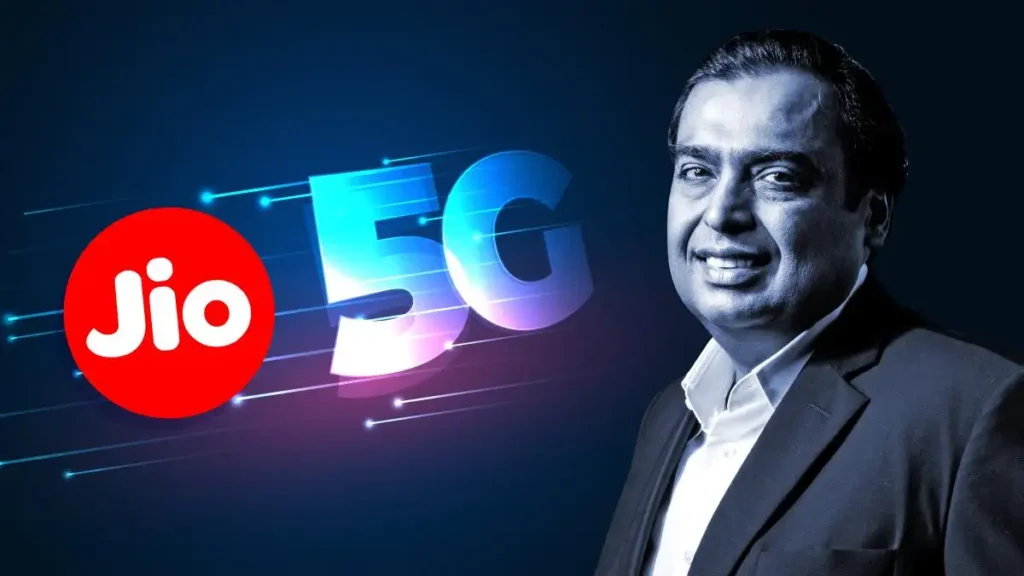Reliance Jio Eyes 26GHz Band for Wi-Fi Expansion, Seeks DoT Approval
In a move that could reshape India’s wireless internet landscape, Reliance Jio has reportedly approached the Department of Telecommunications (DoT) to seek approval for using the high-frequency 26GHz millimeter-wave (mmWave) band to offer Wi-Fi services. While Jio has formally submitted its request, officials at the DoT say they are still reviewing the proposal.

If the DoT grants approval, Jio could roll out ultra-fast Wi-Fi services across densely populated urban areas, commercial zones, and high-demand locations like airports, malls, and stadiums. This development comes at a time when India’s hunger for high-speed internet keeps growing, pushing telecom companies to improve connectivity and user experience.
What Is the 26GHz Band and Why Does It Matter?
The 26GHz frequency band, also called millimeter-wave (mmWave), delivers very high data speeds and low latency, making it perfect for next-generation technologies such as 5G and advanced Wi-Fi networks.
Unlike lower frequency bands, mmWave allows large data transfers over short distances. This makes it ideal for places like urban centers and localized Wi-Fi hotspots. However, its limited range and poor penetration through walls restrict broader coverage. That’s why network providers often deploy it in smaller, targeted zones.
By using this spectrum, Jio aims to deliver fiber-like internet speeds over wireless networks. This method can prove highly effective in areas where laying optical fiber is difficult or too expensive.
Why Does Jio Want to Use the 26GHz Band?
Jio has already invested heavily in its 5G network and broadband services through JioFiber and Jio AirFiber. Now, the company wants to use the 26GHz band to strengthen its position in high-speed wireless internet.
Here’s why the move makes strategic sense for Jio:
- Faster Expansion: mmWave technology lets Jio expand coverage rapidly without needing to dig roads or install underground cables.
- 5G Infrastructure Leverage: Since 5G already uses the 26GHz band, Jio can leverage its existing infrastructure to support Wi-Fi deployments, saving both time and money.
- Boost to Public Wi-Fi: India’s government is promoting public Wi-Fi networks through the PM-WANI initiative. Jio’s move could align with this plan and help launch faster public hotspots.
- Edge Over Rivals: Gaining early access to this technology can give Jio an edge over competitors like Airtel and Vodafone Idea, who haven’t yet explored mmWave for public Wi-Fi.
What Is the DoT’s Role in This?
While Jio has put in its request, the final decision lies with the Department of Telecommunications. Officials must determine whether the spectrum allocated for 5G can also serve Wi-Fi purposes under current licensing conditions.
Currently, the government auctions high-frequency spectrum like 26GHz specifically for 5G. Using it for Wi-Fi might require regulatory changes, updates in spectrum policy, or special permissions.
A DoT official said they are carefully evaluating the request. Their review will consider factors like interference risks, efficient spectrum use, and potential legal implications.
How Could This Benefit Users?
If Jio gets the green light, users across India could enjoy a new era of wireless internet. Here’s what to expect:
- Blazing Fast Wi-Fi: Users could get fiber-like speeds through public or home Wi-Fi setups—great for 4K video, gaming, and remote work.
- Stronger Public Networks: Busy places like airports, colleges, and malls could see better Wi-Fi availability and speed.
- Smooth Connectivity: With Jio already offering 5G and fiber broadband, integrating mmWave Wi-Fi can ensure seamless transitions between networks.
This could prove especially useful in places where fiber networks are unreliable, letting users experience fast internet without cables.
Impact on the Telecom Industry
Jio’s proposal could trigger similar moves from Airtel and Vodafone Idea, especially if the DoT approves it. This could lead to more competition and better services, benefiting consumers across the country.
In the long term, it may also push the government to revise spectrum rules and allow more flexible use of high-frequency bands. Such changes could speed up India’s shift toward a digitally connected future, where fast, wireless internet reaches even remote locations.
Final Thoughts
Reliance Jio’s effort to unlock the 26GHz band for Wi-Fi services shows its commitment to pushing technological boundaries. If the DoT gives its nod, Jio could lead a revolution in India’s wireless internet ecosystem.
As millions of Indians demand better internet experiences, innovations like this could bridge the digital divide and place India among the world’s leaders in next-gen connectivity.






